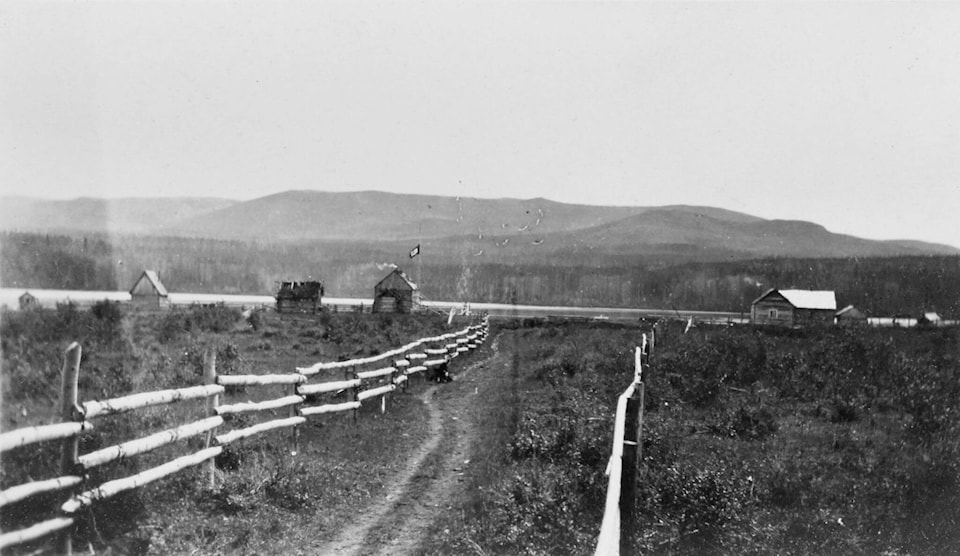A redheaded adventurer named Trygarn Pelham Lyster “Barney” Mulvany is credited with founding the settlement we now know as Burns Lake, but people were living here long before he arrived.
Although archaeological evidence indicates that Indigenous people have inhabited this area for millennia, an American from Wisconsin was one of the first visitors to mention them in a written account. Hamlin Garland, a successful novelist and travel writer, encountered people here on his way back from the Klondike in 1898.
“On Burns Lake, we came suddenly upon a settlement of quite sizable Indian houses with beautiful pasturage about,” Garland wrote in his book Trail of the Goldseekers. “The village contained twenty-five or thirty families of Carrier Indians, and was musical with the plaintive boat-songs of the young people. How long these native races have lived here, no one can tell, but their mark on the land is almost imperceptible. They are not of those who mar the landscape.”
At least three Witsuwit’en families—Burns Lake Tom (C’idimsggin’is), Alec Michell, and Plasaway Michell, along with their wives and children—were living on the shore of Tselh K’iz Bin (Burns Lake) when Mulvany and his dog team first camped here in 1906. They hunted, trapped, and fished throughout the region, and used fire to clear trees and brush from sections of land. This practice of “prescribed burning” was common, and helped improve berry production.
The activities of this area’s first inhabitants may have played an indirect role in naming the community that grew up next to their settlement. Mulvany and others state that the first Euro-Canadians to pass through this area in the mid-1800s named the long, narrow body of water at the bottom of the valley “Burnt Lake” because “a tremendous grass fire had blackened the whole country from the east end of what is now Burns Lake to the westerly end of the present Decker Lake.” It’s a fanciful notion, but likely an incorrect one; the lake’s name is spelled “Byrnes” on a map drawn by cartographer John Clayton White in 1866, suggesting it was named for Michael Byrnes, a scout employed by the Collins Overland Telegraph (Decker Lake derives its name from Stephen Decker, a construction foreman for the same company).
Ironically, another telegraph employee provided some of the first photographs of this area’s Indigenous people. William Gow, an operator for the Yukon Telegraph who arrived here in approximately 1911, brought a camera with him. He used it to document this area’s people and events, and thanks to him, we have a glimpse into the lives of Burns Lake’s earliest inhabitants.
In celebration of Burns Lake turning 100 years old, the centennial committee will be writing a monthly column looking back on the history of Burns Lake. The centennial celebration will be Aug. 17–20.
